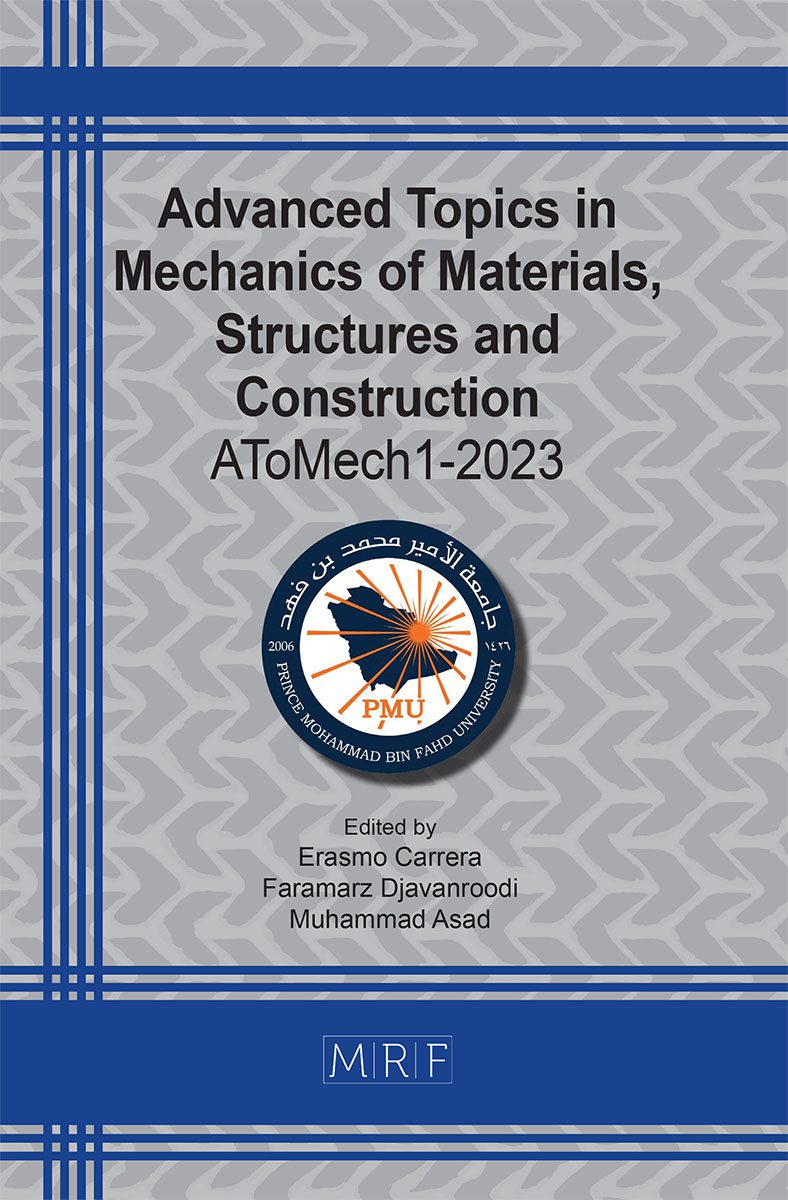Tensile behavior of functionally graded sandwich PLA-ABS produced via fused filament fabrication process
Umut Caliskan, Caglar Sevim, Munise Didem Demirbas
download PDFAbstract. The study investigated the tensile behavior of Sandwich Functionally Graded Material (SFGM) fabricated using Additive Manufacturing (AM) technology. SFGMs are characterized by a gradual variation in composition and structure with respect to the forming volume from the lower and upper surfaces of the structure towards the center, resulting in a corresponding change in material properties. Fused Filament Fabrication (FFF), a widely used AM process, was used in the present work to fabricate the thermoplastic polymer-based SFGM specimens. SFGM were produced by the FFF method using ABS and PLA materials and subjected to tensile tests according to ASTM D638.
Keywords
Additive Manufacturing, Functionally Graded Material, Sandwich Structure, Tensile Behavior, Acrylonitrile Benzidine Styrene, Polylactic Acid
Published online 8/10/2023, 8 pages
Copyright © 2023 by the author(s)
Published under license by Materials Research Forum LLC., Millersville PA, USA
Citation: Umut Caliskan, Caglar Sevim, Munise Didem Demirbas, Tensile behavior of functionally graded sandwich PLA-ABS produced via fused filament fabrication process, Materials Research Proceedings, Vol. 31, pp 726-733, 2023
DOI: https://doi.org/10.21741/9781644902592-74
The article was published as article 74 of the book Advanced Topics in Mechanics of Materials, Structures and Construction
![]() Content from this work may be used under the terms of the Creative Commons Attribution 3.0 license. Any further distribution of this work must maintain attribution to the author(s) and the title of the work, journal citation and DOI.
Content from this work may be used under the terms of the Creative Commons Attribution 3.0 license. Any further distribution of this work must maintain attribution to the author(s) and the title of the work, journal citation and DOI.
References
[1] R. M. Mahamood, E.T. Akinlabi, M. Shukla, S. Pityana, Functionally Graded Material: An overview, Proceedings of the World Congress on Engineering, III, (2012).
[2] S. Nohut, M. Schwentenwein, Vat Photopolymerization Additive Manufacturing of Functionally Graded Materials: A Review. Journal of Manufacturing and Materials Processing. 6 (2022)17. https://doi.org/10.3390/jmmp6010017
[3] T.D. Ngo, A. Kashani, G. Imbalzano, K.T.Q. Nguyen, D. Hui, Additive manufacturing (3D printing): A review of materials, methods, applications and challenges, Composites Part B: Engineering, 143 (2018), 172-196 https://doi.org/10.1016/j.compositesb.2018.02.012
[4] K.W.A. Van der Elst , Industry 4.0: The new production paradigm and its implications for EU policy (2017)
[5] A. Sartal, R. Bellas, A.M. Mejías, A. García-Collado, The sustainable manufacturing concept, evolution and opportunities within Industry 4.0: a literature review
[6] B. Saleh, J. Jiang, R. Fathi, T. Al-hababi, Q. Xu, L. Wang, D. Song, A. Ma, 30 Years of functionally graded materials: An overview of manufacturing methods, applications, and future challenges. Compos. Part B Eng. 201 (2020), 108376. https://doi.org/10.1016/j.compositesb.2020.108376
[7] A. Al Rashid, W. Ahmed, M.Y. Khalid, M. Koç, Vat photopolymerization of polymers and polymer composites: Processes and applications, Additive Manufacturing, 47(2021), 102279, https://doi.org/10.1016/j.addma.2021.102279
[8] S. Anand Kumar, Y. Shivraj Narayan, Tensile Testing and Evaluation of 3D-Printed PLA Specimens as per ASTM D638 Type IV Standard, Innovative Design, Analysis and Development Practices in Aerospace and Automotive Engineering (2019). https://doi.org/10.1007/978-981-13-2718-6_9
[9] Riiz Machinery ltd. co. FILAMEON, www.filameon.com.
[10] Ultimaker CURA (https://ultimaker.com/software/ultimaker-cura) (accessed Dec 10, 2021).












